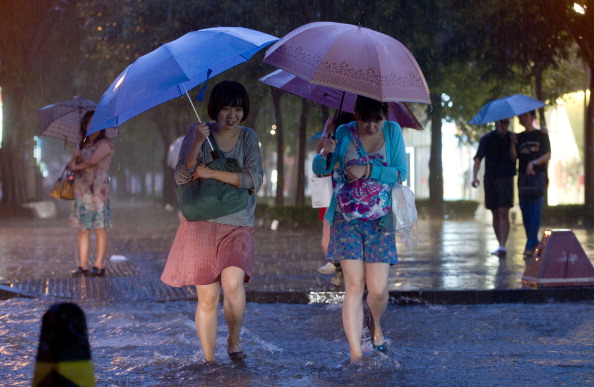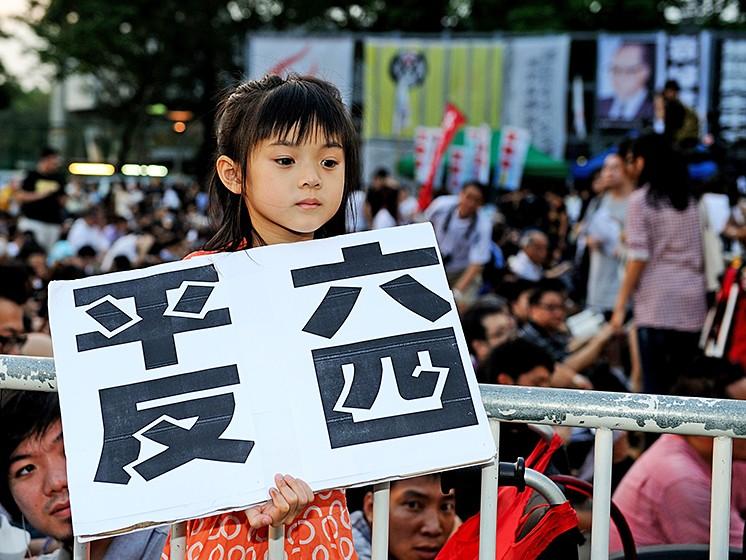After a deadly rainstorm struck Beijing on July 21, residents cast doubts and blame on the communist authorities’ lack of attention to the city’s infrastructure. Netizens noticed that while floods covered the streets of Beijing, the Forbidden City emerged from the ordeal unscathed.
The storm—the worst in over 60 years—took the lives of at least 37 citizens. Trees were blown down, cars stuck in mud and water, houses destroyed, and people swam back home on the streets. The disaster inflicted damages valued up to 10 billion yuan (US$1.6 billion). About 1.9 million people suffered losses, according to state-owned media.
Zeng Xiaohui, head of Hong Kong Landscape Planning and Design Institute and Guangzhou’s New Century Art Research Institute, commented on China’s Twitter, Sina Weibo.
“The whole city turned into a floodplain. Citizens groaned in pain. As this scene appeared before our eyes just before the Olympics in London kick off, we cannot help but look to the days of glory that Beijing once had four years ago. How come a city that could hold the so-called ‘best Olympic Games’ be so weak when rain hits? Let the water be a mirror that shows us what’s beneath the powder on the the ugly faces of the politicians who are only after grandiose, superficial achievements,” he said.
As people question the city’s infrastructure, Wang Yizeng, head of Beijing’s Flood Control Office, answered that the drainage network can only handle about one-fifth of the recent rainfall, and its capacity was designed such that flooding is expected to occur every one to three years, according to the state-controlled China Economic Net. The Office pointed out that long proceedings for approval of construction projects by the government are one of the reasons for the delay of a much-needed upgrade of the city’s drainage system.
China Economic Net also cited comments by Zhou Yuwen, a professor at the College of Architecture and Civil Engineering at the Beijing University of Technology.
“[When the Communist Party took over in 1949] we only thought of using less money to fulfill temporary needs,” Zhou said, pointing out that the communist regime followed the Soviet Union’s theories for city planning in the early days. “There were times when it was usual for flooding to occur two to three times a year.”
Residents of Beijing made reminiscent comments on the effectiveness of traditional methods of city planning, saying that although constructed in a modern age, the current drainage system is far less advanced than the ones designed and constructed 600 years ago for the Forbidden City.
Rainwater did not accumulate inside the The Forbidden City, the imperial palace at the center of Beijing, after the storm last Saturday.
“I admire our ancestor’s mighty wisdom,” commented one Weibo user.
“Today’s China is not the country that once owned so many skillful craftsmen. We are defined by the Great Leap Forward and the Cultural Revolution. The buildings from the Republic time [before the Communist Party took over] were of high quality,” commented another Weibo user.
The Great Leap Forward was a social campaign led by the Communist Party to speed up modernization that ended in catastrophe and famines. The Cultural Revolution was initiated by Mao Zedong to destroy traditional Chinese culture. Both campaigns killed tens of millions of people, according to some estimates.
The Forbidden City has two drainage networks—one above the ground and one under. The inner court of the Forbidden city is surrounded by over 1,000 stone dragon heads that serve as a drainage system as accumulated water flows down through the mouths of the dragons. The water then flows to Jinshui River before it joins the moat that surrounds the city called Tongzi. As for the underground system, it utilizes both open ditches and sewers. In the past, the royal court scheduled frequent checks to the drainage system to ensure its function.
Read the original Chinese article.
The Epoch Times publishes in 35 countries and in 19 languages. Subscribe to our e-newsletter.






